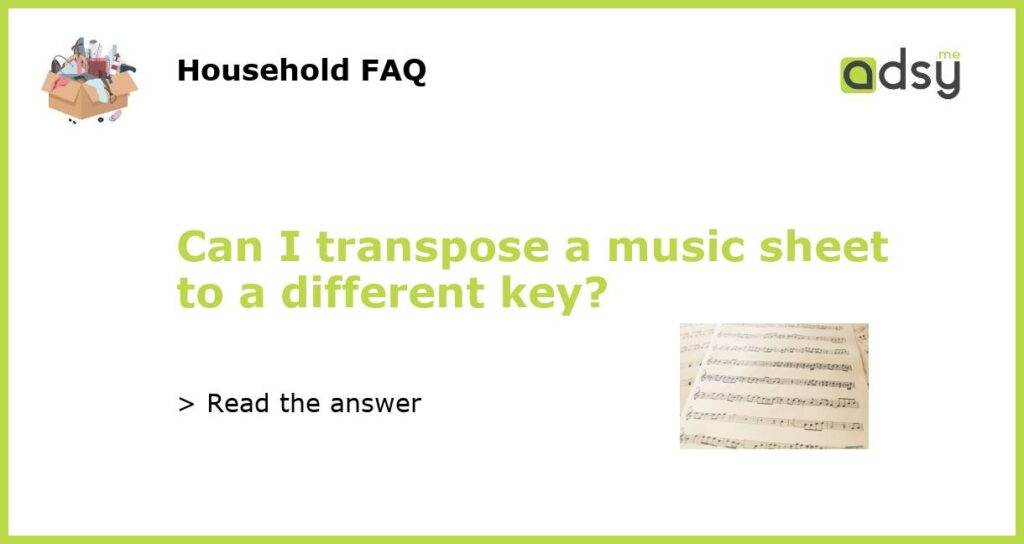Yes, You Can Transpose a Music Sheet to a Different Key
Have you ever come across a song or a music sheet that was too high or too low for your voice or instrument? The good news is that you can transpose the music sheet to a different key that suits your vocal or instrumental range.
Why Transpose a Music Sheet?
There are various reasons why you may need to transpose a music sheet. For instance:
- Your voice is too high or too low for the original key
- Your instrument’s range does not allow you to play the original key comfortably
- You want to play or sing the song with someone else who has a different vocal range or instrumental key
How to Transpose a Music Sheet
Transposing a music sheet involves changing the key of the song while keeping the same melody, rhythm, and harmony intact. The process can be done manually or using music notation software such as Finale, Sibelius, or MuseScore.
Here are the steps to transpose a music sheet manually:
- Determine the original key of the song and the key you want to transpose it to
- Find out the interval or the distance between the two keys. For example, if you want to transpose a song from the key of C to the key of D, the interval is a whole step (or two half steps).
- Using a music theory chart or a musical instrument, identify the notes of each chord in the original key.
- Apply the interval to each note of the chord, moving it up (if the interval is ascending) or down (if the interval is descending) the same amount of steps.
- Write down the new chords in the transposed key, ensuring that they align with the original lyrics or melody
Transposing a music sheet to a different key can broaden your musical horizons and allow you to perform songs that were previously out of your reach. With the right tools and knowledge, you can easily transpose any song to a key that suits your voice or instrument.






